Bodrum Castle, which has been a symbol of Bodrum for 600 years, is home to one of the first and most important examples of its kind, the Bodrum Underwater Archaeology Museum. Located in the heart of the city, this museum has been a popular attraction for both local and foreign visitors for decades.
Underwater archaeology reveals some valuable information about human history that we rarely find in ground excavations. Archaeological excavations on land often unearth monumental structures created by great leaders and empires that shaped history. On the other hand, underwater archaeology helps us understand the everyday life of past civilizations through artifacts preserved under the sea for thousands of years.
The secrets hidden under the blue waters of the Mediterranean Sea for thousands of years are displayed at the exhibition halls of the Bodrum Underwater Archaeology Museum. The museum offers a fascinating experience for history enthusiasts, as well as for nature lovers seeking tranquillity in the arboretum spread throughout the courtyards of Bodrum Castle.
In This Article
Location and Contact Information
Info Card
Address: Carsi Mahallesi, Kale Caddesi, No: 36 48400 Bodrum, Mugla
Phone: +90 (252) 316 25 16
E-Mail: bodrumsualtiarkeolojimuzesi@kultur.gov.tr
Website: https://muze.gov.tr/muze-detay?SectionId=BSA01&DistId=MRK
Working Hours: Open every day between 08:30 and 17:30. Ticket office closes at 17:00.
Note:
Opening and closing times for the museum can vary depending on the season. It is an open-air museum with various buildings used as exhibition halls. The authorities may change the working hours based on sunset time. For the most updated information, check the official website of the museum or call the ticket office.
Bodrum Underwater Archaeology Museum and Bodrum Castle
The Bodrum Underwater Archaeology Museum is located inside the Bodrum Castle, which sits on a small peninsula dividing Bodrum city in two. Some parts of the castle have been transformed into exhibition halls for the museum. Additionally, two prefabricated buildings in the lower and upper courtyards house exhibits that cannot fit into the castle’s rooms.
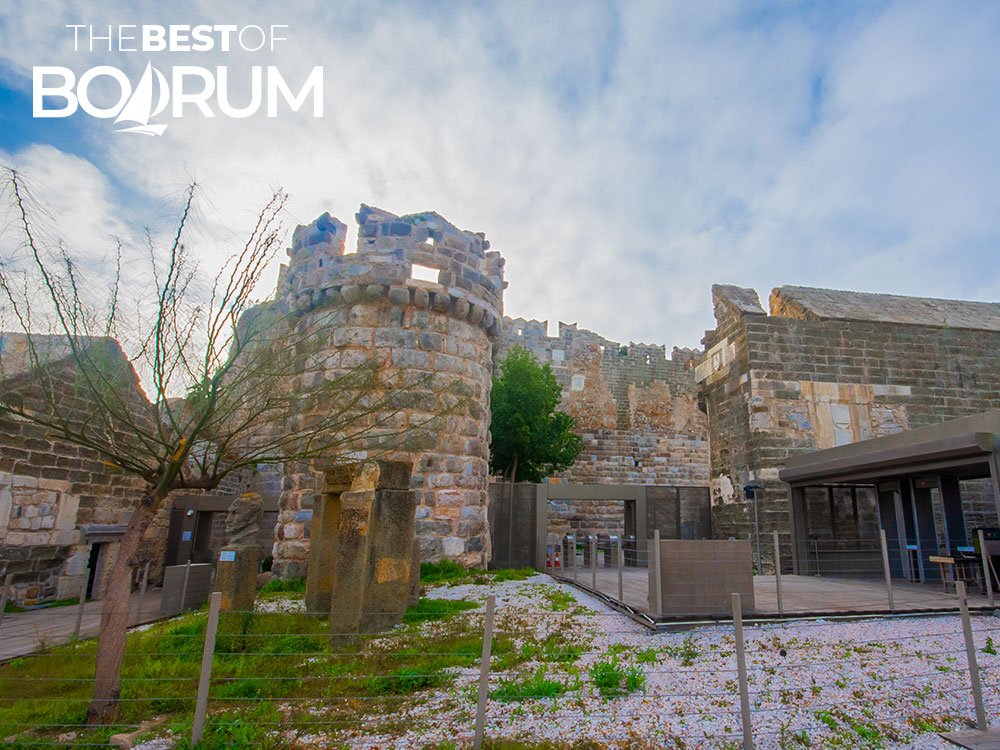
Although they share the same location and have a single entrance and ticket, the castle and the museum have different backgrounds and histories. Therefore, I decided to cover them separately on THEBESTOFBODRUM. You can find the list of articles I have written about this unique duo below.
- Bodrum Castle, click here to visit
- Bodrum Underwater Archaeology Museum (you are currently reading this article)
- History of Bodrum Castle, click here to visit
- Bodrum Castle Plan, click here to visit
A Brief History of the Museum
The museum’s history began with the world’s first scientific underwater archaeology excavation, which took place on the south coast of Turkey, near Antalya.
George Fletcher Bass (1932 – 2021) was an American archaeologist, a pioneer in underwater archaeology, and the founder of the Institute of Nautical Archaeology. Bass and a group of scientists went on an expedition to southern Turkey at Cape Gelidonya in 1960. Their goal was to fully excavate an ancient shipwreck from underwater for the first time in archaeological history. The shipwreck they uncovered was a 20m long ancient merchant ship from 1200 BC.
Following the successful excavation at Gelidonya, Bass initiated another underwater excavation near Yassiada, an island off the coast of Turgutreis, in 1961. The Yassiada wreck was a 21m long ship from the Byzantine Empire from the 7th century. The team made over 3,500 dives to complete the excavation between 1961 and 1964.
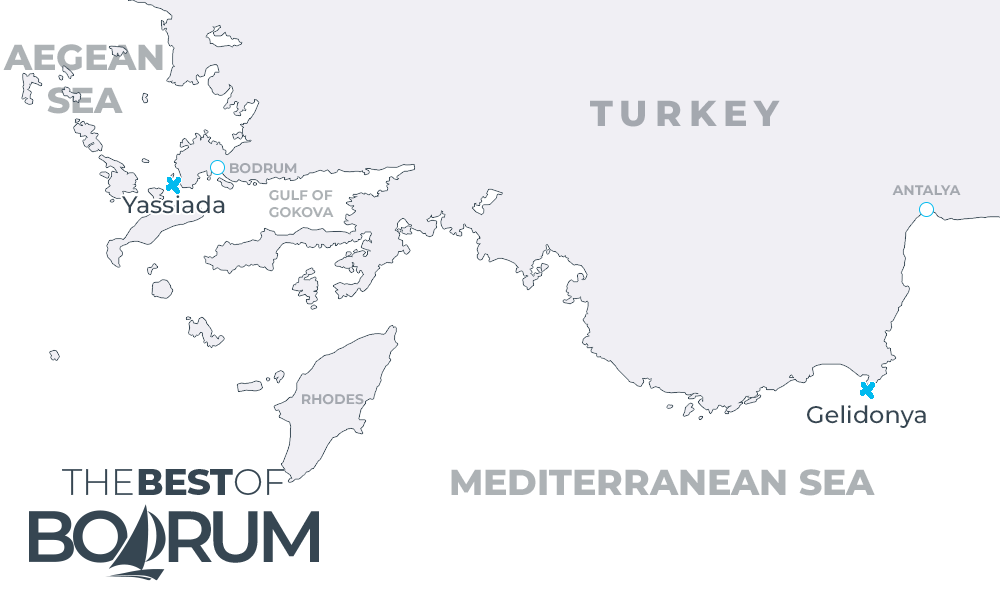
To preserve and showcase the findings from the Gelidonya and Yassiada excavations, the historical castle in Bodrum was converted into the Bodrum Museum in 1964. In 1981, local authorities changed the name of the museum to the Bodrum Underwater Archaeology Museum.
The museum received the European Museum of the Year Award in 1995. In 2017, both the museum and the castle underwent major renovations for four years. Since 2021, the Bodrum Underwater Archaeology Museum has been welcoming visitors with its new look, remaining one of the most popular museums in Bodrum.
Exhibits at the Museum
For thousands of years, the blue waters of the Mediterranean have hidden secrets that are now being discovered by visitors at the Bodrum Underwater Archaeology Museum. History enthusiasts from around the world take a journey from ancient times to the present within the walls of the 600-year-old Bodrum Castle.
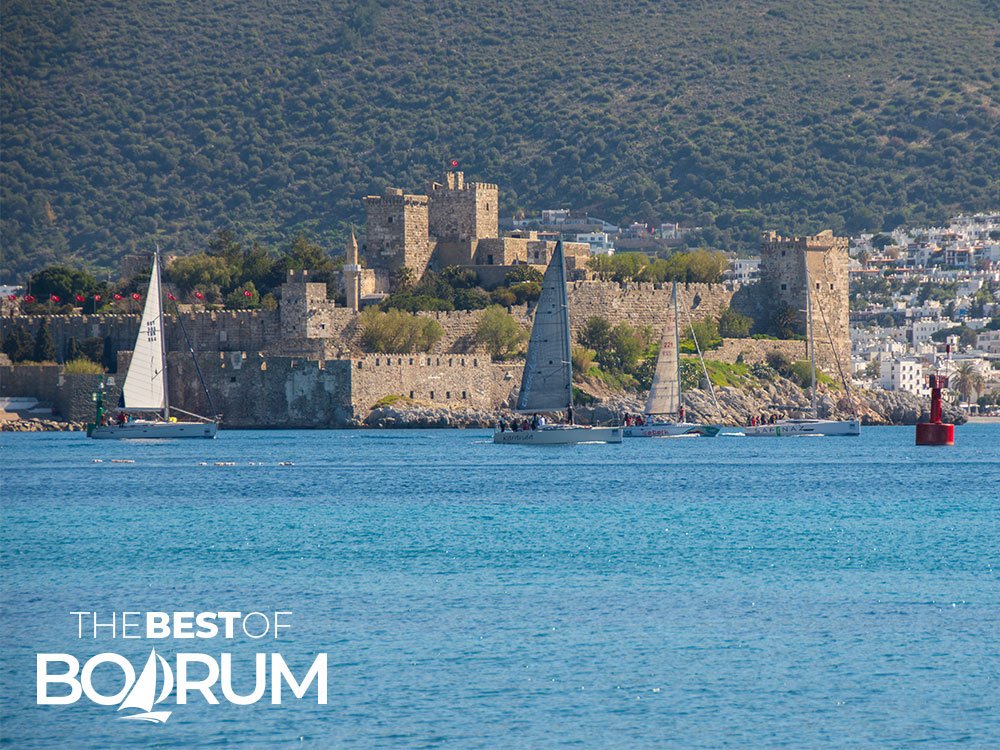
Covering an area of 3.3 hectares (approximately 8.2 acres), this special place showcases artifacts from ancient sunken ships and allows visitors to explore findings excavated from archaeological sites in Bodrum and its surrounding ancient cities.
While three courtyards within the castle serve as open-air exhibition areas, more than 10 buildings have been arranged to display the museum’s collection. Additionally, two prefabricated buildings, one in the lower courtyard and one in the upper courtyard, serve as exhibition halls.
Open-Air Exhibitions
The walls of the Bodrum Castle can be considered as an open-air exhibition by themselves. Although they are mainly made of stones from nearby quarries, the remains of the Mausoleum, one of the Seven Wonders of the Ancient World that collapsed in the 12th century due to an earthquake, were also used in the castle’s construction.
Built on the foundations of another castle constructed by the Turkish Beylik of Mentes, the Knights of St. John, also known as the Knight Hospitallers, spent over 40 years completing its construction with contributions from English, Germans, Italians, Spanish, and French. During construction, castle commanders and knights placed their family symbols on the walls. Today, you can find more than 200 coats of arms in the castle.
After entering the museum and walking towards the lower courtyard, you will first come across an exhibition of old cast iron cannons from the Ottoman period and an observation terrace overlooking the Aegean Sea.

Shortly after passing through the Gateway Tower, you will reach the lower courtyard of the Bodrum Underwater Archaeology Museum. Here, alongside ancient anchors recovered from the Mediterranean waters, you can also examine various stone sculptures and carvings unearthed in excavations around Bodrum.
Following the main path will lead you to the 1st upper courtyard where you can find more stone artifacts from ancient times. Continuing further, you will arrive at the 2nd upper courtyard where stairs and passages provide access to the castle walls.
Castle Towers
In the castle, there are 5 towers representing the nationalities of the contributing knights and commanders of the Knights Hospitallers. The Spanish Tower, also known as the Snake Tower, can be found at the 1st upper courtyard of the castle. It houses the amphoras discovered at the Tektas Shipwreck in 1999 near ancient Teos City. Dating back to the 5th century BC, this merchant ship was transporting amphoras and Eastern Anatolian ceramics. Approximately 200 amphoras filled with wine, pine tar, and chopped beef were found.
Another tower at the 1st upper courtyard is the German Tower, showcasing findings from the Bozukkale underwater excavations. This sunken ship from the archaic period primarily carried mortarias, a type of Ancient Roman pottery. The age of the Bozukkale shipwreck is estimated to be between the late 7th century BC and the early 6th century BC.
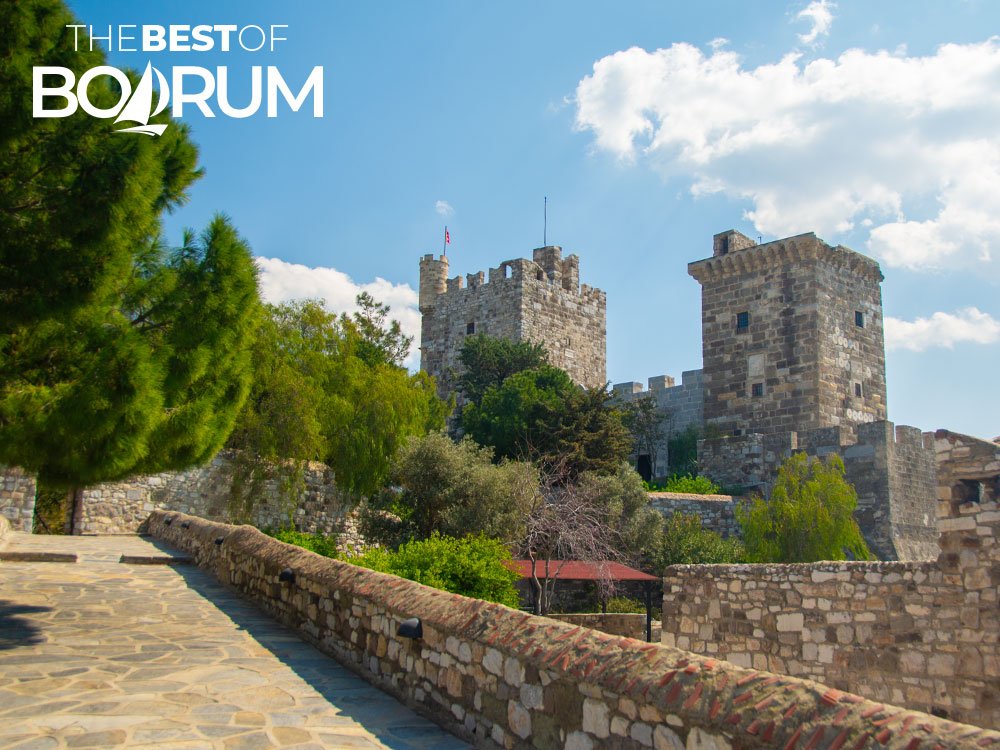
The Italian Tower, which houses a collection from early Bronze Age necropolises, is accessible through the staircases at the 1st upper courtyard. Adjacent to the Italian Tower is the French Tower, where exhibitions of artifacts from the Musgebi Necropolis (the old name for today’s Ortakent town) and Pedesa Ancient City can be visited.
The English Tower, the last tower in the Bodrum Underwater Archaeology Museum, can be reached from the 2nd upper courtyard. This tower is dedicated to the Knights of St. John and serves more as a tribute to the knights rather than an exhibit. However, it is one of my favourite sections of the museum. This hall sometimes hosts small but exclusive events. For instance, I had the opportunity to attend a Q&A session with one of the internationally acclaimed Turkish painters, Bedri Baykam, in this tower.
Serce Limani Shipwreck
As you walk towards the upper courtyard in Bodrum Castle, you’ll see a building on your left. It is home to one of the most significant collections of the Bodrum Underwater Archaeology Museum: The Serce Limani Shipwreck, also known as the Glass Shipwreck. Don’t let the “glass” name confuse you; it’s not made of glass but rather carried tons of glass cargo.
The Serce Limani Shipwreck was a Byzantine merchant ship from 1025 AD. Its importance lies in its cargo. The findings include over 3 tons of mostly broken glassware, some intact pieces, dozens of Islamic bowls, and cooking vessels, as well as sumac and raisins from the Fatimid Empire.
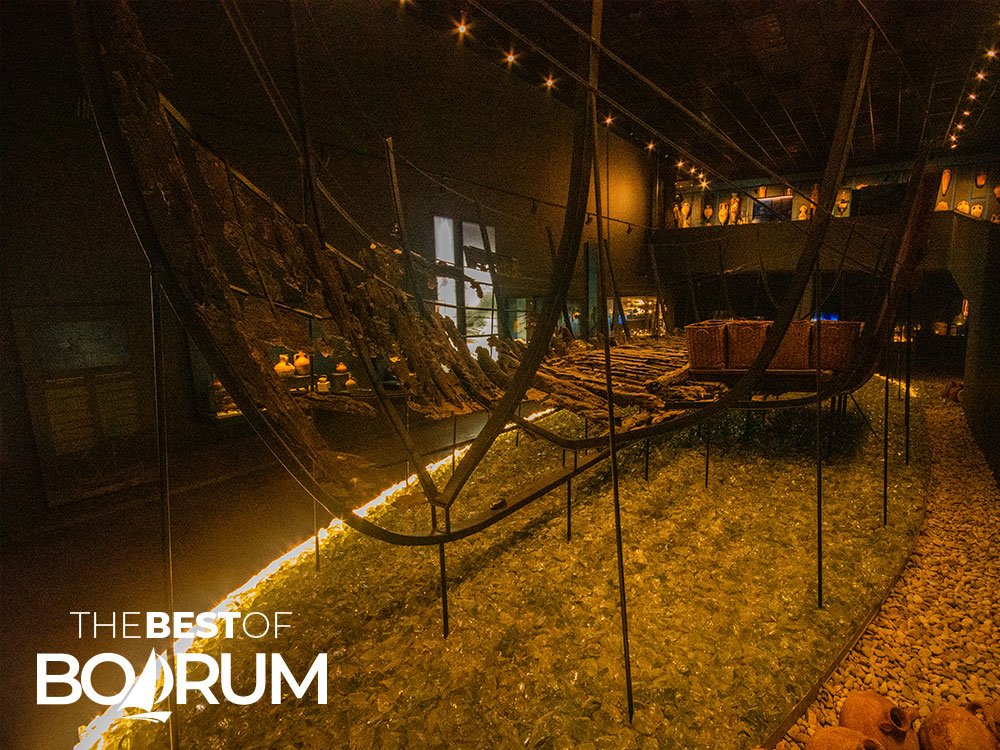
The glass collection is very sensitive to factors like moisture and light. To preserve the collection, the authorities recently separated the Serce Limani Shipwreck exhibition hall from the rest of the museum. This means you’ll need a separate ticket to access this hall. The ticket you bought for the museum entrance does not include access to the Glass Shipwreck Hall.
If you have a passion for history, I recommend buying a ticket to see this collection. I believe it’s truly worth the visit.
Other Halls and Buildings
After entering the Bodrum Underwater Archaeology Museum, just before reaching the lower courtyard, you will see stairs leading down into the castle walls, to a corridor displaying amphoras discovered in the Mediterranean Sea. This corridor offers the opportunity to inspect a variety of amphoras grouped by their origin and age.

Next, you’ll come across the lower courtyard where a church that was transformed into a mosque with the addition of a minaret will be the first building you will notice. In the same courtyard, there’s a small room arranged as a traditional Turkish bath. I don’t know why but the castle management usually prefer to keep it closed. Although not very significant, it’s worth taking a look inside if it’s open.
As you make your way to the castle’s first upper courtyard, you’ll notice stone stairs on your right. These stairs lead you to the castle’s highest points, where the Italian and French Towers are also located. This section of the castle hosts several exhibitions spread across various castle rooms, particularly artifacts found in archaeological excavations carried out in the Bodrum Peninsula.
One such exhibition in the same area is the Carian Princess exhibition, featuring a sarcophagus of a Carian woman and a representation of how women dressed in the Kingdom of Caria. Although named “Carian Princess”, I must also mention that the remains found in the sarcophagus do not actually belong to a princess.
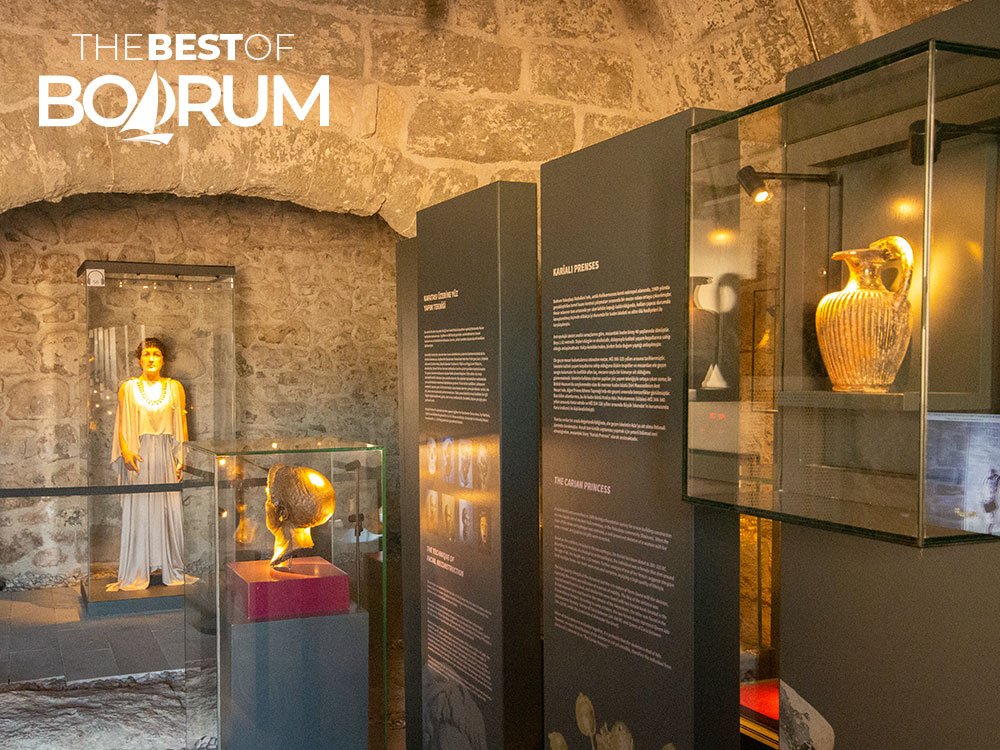
If you keep walking in the first upper courtyard rather than taking the stairs, you’ll arrive at the second upper courtyard. The only building in is area is a hall displaying shipwrecks from the late Bronze Age, which I think you might also find as one of the most interesting exhibitions of the Bodrum Underwater Archaeology Museum.
Services and Amenities at Bodrum Underwater Archaeology Museum
The Bodrum Castle has two cafes. You can sit in either of them to rest, relax, or enjoy some soft drinks and snacks. One cafe is located in the lower courtyard, while the other is at the castle exit.
I personally enjoy spending time at these cafes. Even when the weather is hot and the streets of Bodrum are crowded, both cafes are always quiet, providing a cooler atmosphere under the shade of old trees.
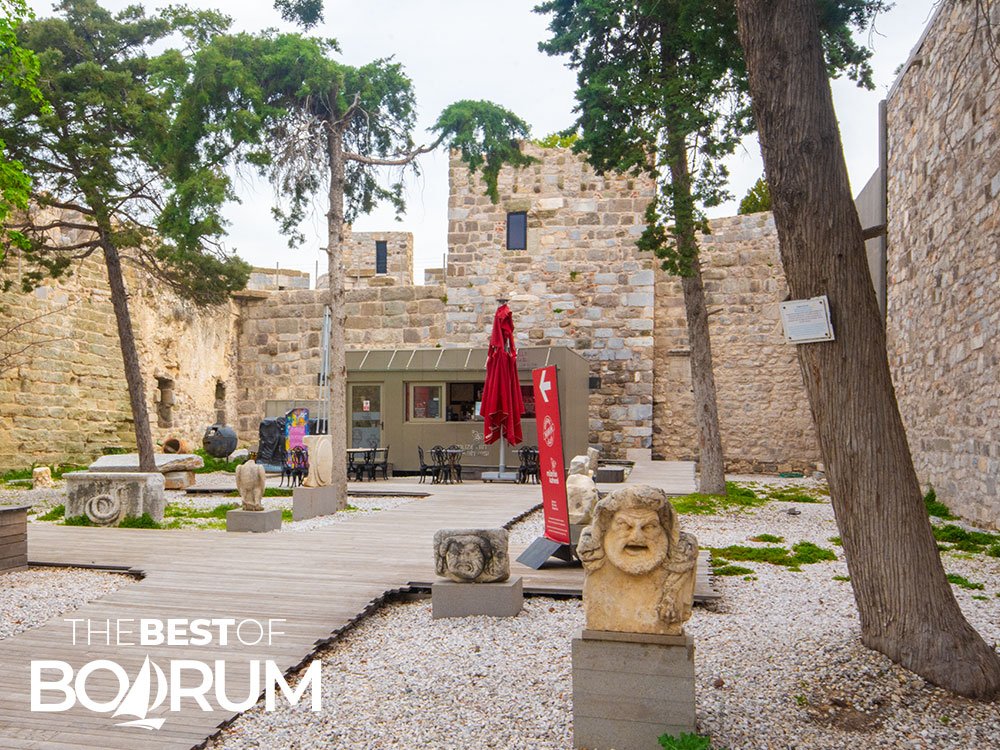
At the museum exit, in the same area as the castle’s second cafe, there is a small shop where you can buy gifts for your family and friends, as well as various books about the history of Turkey in different languages.
The Bodrum Underwater Archaeology Museum also has three restroom facilities in three different locations: the lower courtyard, the first upper courtyard, and across from the gift shop at the museum exit.
Entrance Fee and the Museum Pass
Turkey has a fluctuating economy, so prices in hotels, bars, restaurants, public services, and even museums can vary. As a guideline, you can expect to pay between €15 to €20 for entry to the Bodrum Underwater Archaeology Museum. You can pay this fee with cash or a credit card. Although it is the most expensive museum in Bodrum, trust me, it is worth every penny.
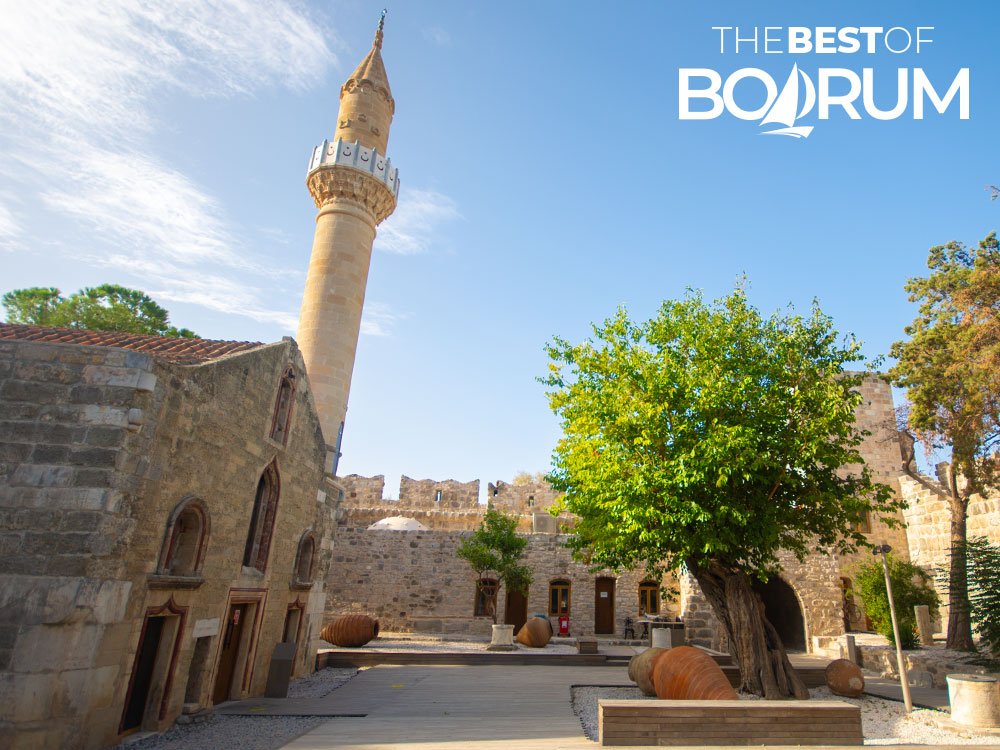
If you plan to visit more museums in Turkey, I highly recommend purchasing a museum pass, as it can help you save a lot. These passes are issued by the Ministry of Culture and Tourism and can be purchased from the ticket office of the Bodrum Castle. There are several types of passes available, such as the Museum Pass Istanbul, Museum Pass Cappadocia, Museum Pass the Mediterranean, Museum Pass the Aegean, and Museum Pass Turkiye. You can visit the official museum pass website for more information on the options, pricing, and how to purchase them.
Recommendations from the Aegean Traveller
Bodrum Castle covers an area that is nearly square, approximately 185 by 180 metres. It may seem small, but don’t be fooled. Plan to spend a minimum of 2 to 3 hours to fully explore its various sections and enjoy the panoramic views. Therefore, try to avoid scheduling your visit close to the museum’s closing time.
Be prepared for the summer heat. Carry a bottle of water and a hat to protect yourself from the sun. The café prices within the museum are usually a bit higher than those in local markets, so you may prefer to bring your own water.
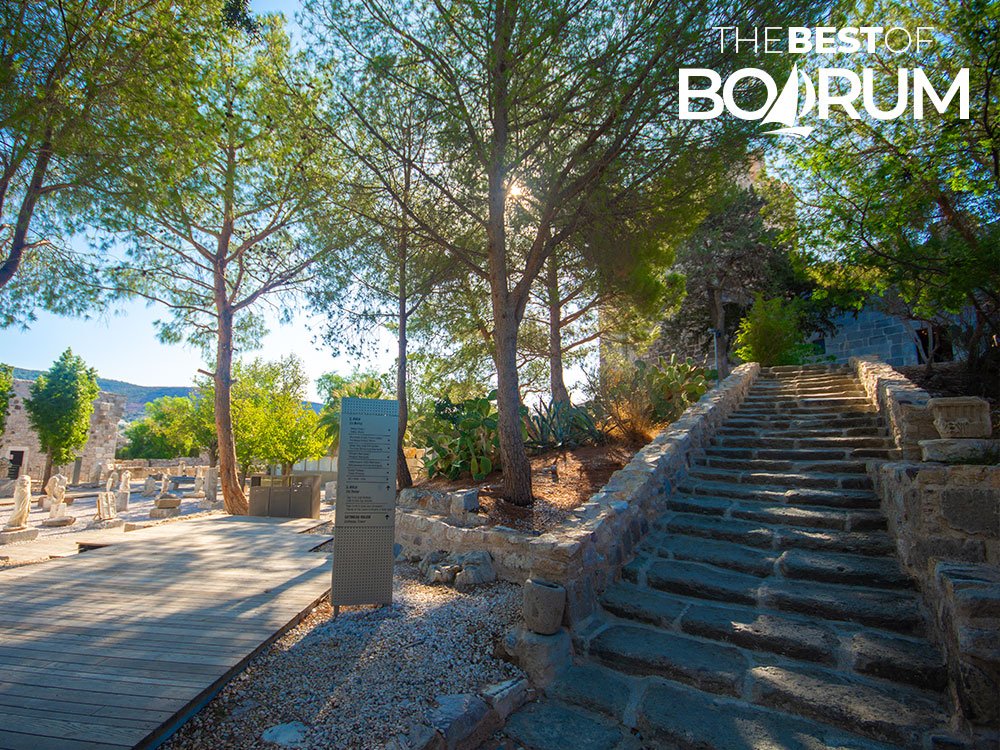
Moving between sections involves climbing stairs and slopes, which can be challenging, especially under the hot sun. Take breaks and rest on a bench if needed. After all, you’re in the Aegean where life moves at a slower pace.
On occasion, certain sections of the Bodrum Underwater Archaeology Museum may be closed for repairs, renovations, or research. If you’re particularly interested in any section, check with the staff at the entrance before you pay the entry fee.
Finally, don’t forget to bring your camera to capture the great panoramic view of the Aegean Sea and Bodrum town from the castle walls. However, please be aware that camera use or flash photography is not allowed in certain parts of the museum. Follow the signs in the exhibit halls to guide you.
Finally, if you have time, take advantage of the tranquil ambiance of Bodrum Castle. Bring a book and find a seat on a wall overlooking the Aegean horizon or in the courtyard where peacocks walk around freely. Enjoy the peaceful surroundings and your book. To me, spending some quiet time there is truly invaluable!

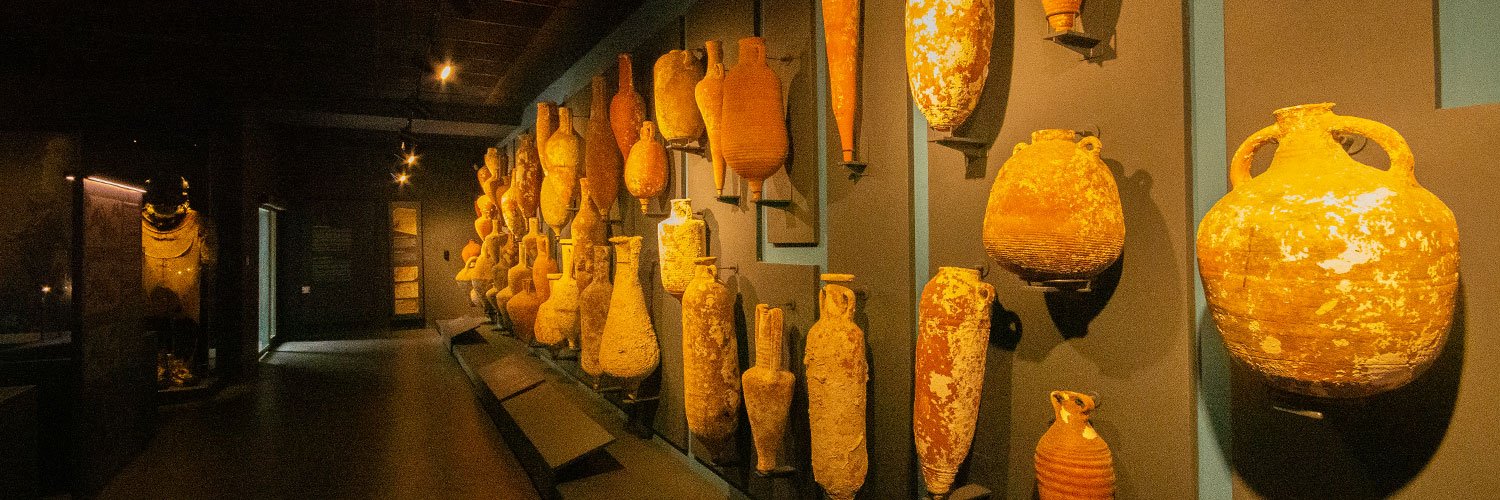
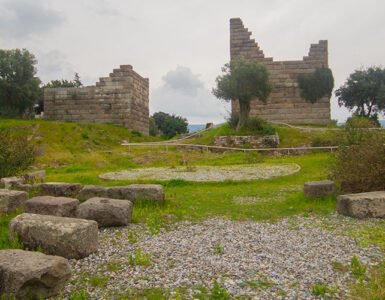
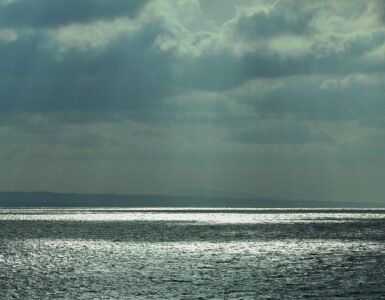
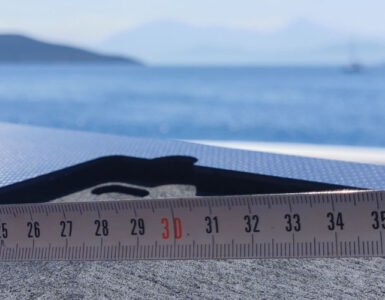











Add comment